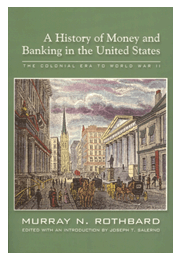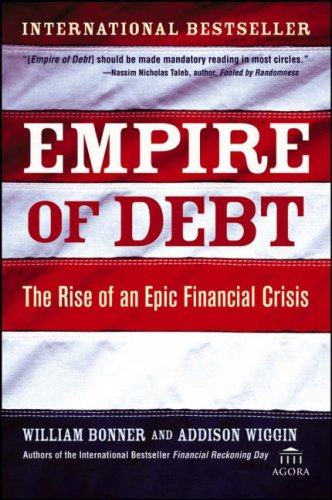Silver Profits in the New Century
By Theodore Butler
Investment Rarities 2001
111 pages. $59.00
According to Webster’s Dictionary, silver is “a white, precious, metallic chemical element that is extremely ductile and malleable, capable of a high polish, and an excellent conductor of heat and electricity.” Webster’s goes on to state that silver is also a commodity and a medium of exchange.
In other words, silver is synonymous with money.
During the Middle Ages, alchemy was popularly practiced. Alchemists were Rumpelstiltskin wannabes. They wanted to transmute common materials into gold or silver. Alchemists considered silver the prima materia – the first element.
Like the alchemists, Theodore Butler holds that silver is important. He believes that silver is a profitable investment, especially in today’s economic climate. Silver Profits in the New Century is his treatise on how and why one should invest in silver.
Butler begins by going Back To The Future, where he looks back at the enormous profits available to those who had the foresight to invest in real estate 40 or 50 years ago. A home purchased for $15,000 in the 1960s is now worth twenty or thirty times that amount. Butler then states that a similar opportunity exists today. “I contend that silver today is very similar, opportunity-wise, to raw land around major metropolitan areas 50 years ago.” Why? Because silver, when adjusted for inflation, “is at a 5000 year price low.”
The driving force of the price of silver is demographics, declares Butler. By which he means the supply of silver is finite, but the demand continues to grow. And unlike gold – which he is bullish on – silver is primarily consumed industrially, which means it “gets used up and destroyed.” Which is why silver inventories are declining.
Essentially, Butler believes the price of silver does not reflect its “true economic condition.” Which means that the price of silver must and will go up.
In the second chapter, Butler explains why silver is becoming more and more scarce. He bluntly states that the Feds will never sell real silver “to cover a market shortage.” Thus, if an investor holds real silver, he is in the cat-bird seat. For the price will “rise like a mighty giant.”
Under the present circumstances, Butler maintains the “silver window is closing,” which is the topic of chapter three. He points out that world mining production of silver is about 500 million ounces per year. Another 150 million ounces are added by recycling of silver. Consumption is 800 million ounces per year. Which means silver runs in the red to the tune of 150 million ounces per year. The deficit is made up by “drawdowns on existing inventory.” In Butler’s opinion, the present scenario guarantees the price of silver will skyrocket.
Butler wisely points out that he is not “a gold or silver bug. I’m not a hard money advocate.” He is not forecasting the end of the world or the collapse of King Dollar. He is merely a believer in “buy low and sell high.” And his attraction to silver “revolves around price.” The price is artificially low and has no where to go but up.
Aware of “the bearish arguments against silver,” Butler uses chapter five to confute the arguments. Regarding digital photography replacing silver-halide photography, Butler provides numbers indicating that demand for silver-halide film and paper continues to grow. In fact, he says that Kodak “is loading the boat with silver,” because they don’t want to be caught short of inventory.
The bears also argue large amounts of “above-ground stocks of silver will become available in a price rise.” And that China and India have massive supplies of silver. Butler counters by demonstrating that all verifiable stocks of silver are depleting. Which explains why Warren Buffet purchased so much in 1997. And he points out that many banks have “leased” their silver, which means they no longer actually hold it. In a similar manner, Butler goes on to refute the other bearish arguments against silver. All in all, he makes a cogent case.
Silver leasing is discussed in chapter six. Butler considers silver leasing “fraud and manipulation.” He describes it as a “Ponzi arrangement.” And he explains how silver leasing works. The result of this silver leasing is artificially depressed prices. Butler maintains this silver leasing process will inevitably “unravel.” When it does, the price of silver will “explode,” as the artificial restraints are removed.
In chapter 11, Butler strengthens his case for silver. As he says, “No matter how bullish you might be on crude oil, natural gas, soybeans or cotton, there is no practical way an individual investor could buy the real thing.” Most commodities can only be owned on paper. Two exceptions exist: gold and silver. And Butler feels silver is the better option. Why? Because “only with silver and not gold do you get too much for your money.” For example, “for $25,000, you get roughly 7 pounds of gold. But $25,000 worth of silver weighs 350 pounds.”
Butler admits that silver’s sheer bulk can pose storage problems. But he dismisses the problem as one of logistics, saying, “When has it ever been a problem that you’ve gotten too much for your money?”
The final chapters of the book include an interview with Butler, and a multitude of questions – and their answers – that most investors would ask if they could. Which makes for a nice conclusion, as the questions are pithy and the answers are honest.
Silver Profits in the New Century is written in an easy-to-read, down-to-earth style. Butler’s approach is logical, which means he relies on old-fashioned common sense and deductive reasoning. He doesn’t try to mystify his readers with esoteric economic theories and technical jargon. Which is very refreshing.
![]() On the Read-O-Meter, which ranges from 1 star (a poor investment) to 5 stars (extremely profitable), Silver Profits in the New Century yields 5 stars.
On the Read-O-Meter, which ranges from 1 star (a poor investment) to 5 stars (extremely profitable), Silver Profits in the New Century yields 5 stars.


